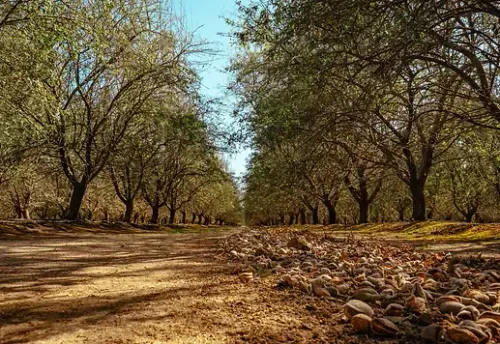Oklahoma City-based ammonia producer LSB Industries wants to be a player in new markets for ammonia as they develop, and is nearing a deal to provide blue ammonia to an existing customer in its ammonium nitrate and nitric acid segment, CEO Mark Behrman said in an interview.
Though Behrman expects LSB’s sales mix to shift – and the company’s valuation to rise – as ammonia markets evolve, it is pursuing deals to furnish blue ammonia at a premium to customers in its ammonium nitrate and nitric acid segment, currently its largest portion of net sales.
LSB is developing a blue ammonia facility on the Houston Ship Channel with INPEX and Air Liquide, offtake contracts for which could push its earnings mix away from more volatile fertilizer markets and help revalue the company. It also has a partnership with Lapis Energy for the installation of a carbon capture unit at its ammonia production facility in El Dorado, Arkansas.
“Unlike a lot of our competitors, who are really known as fertilizer companies, half our business is non-fertilizer,” he said. “So we’re really familiar with the non-fertilizer markets and the pricing and contractual nature of those markets.”
The company is in talks with its mining and nitric acid customers – Covestro, Dow, BASF – about helping them lower their carbon footprint via blue ammonia so these customers can meet 2030 decarbonization goals, said Behrman, who hopes to announce a sizeable contract within the next several months, “obviously at some premium to the price that they’re paying today.”
As for what the blue premium will be, for some markets the formulation might come down to the required capital investments and the developer’s desired return.
“I want long-term cost plus offtake contracts so I could de-risk the volatility in any cost,” he said.
By way of example, Behrman said, “If we’re selling to JERA, and we have a long-term contract, and it’s a cost plus, so natural gas and power plus, it might be at a healthy premium to the overall ammonia market, or it might be a discount to the overall market,” he said, “but basically we’ve built an annuity because we’ve got a long-term contract at cost plus, and lock in our return as long as we operate the plant well.”
‘Meaningful player’
Behrman, a former investment banker, recognizes that it’s a brave new world for ammonia – particularly clean ammonia – with demand expected to come from myriad new places like shipping and power production. “We want to be a meaningful player as the new demand develops for ammonia,” he said.
But he believes the market will evolve more slowly than expected, noting that initial estimates even for Japanese offtake and use of ammonia have already been pushed back.
“I think in the earlier years, so call it ‘28, ‘29, even ‘30, you’re probably only going to have two or three offtakers out of Japan until the other ones come online.” Korea, on the other hand, might be faster due to its national incentive scheme, he said.
Meanwhile, in the last few months, LSB has had a lot of conversations with potential European offtakers as Europe’s carbon tax scheme and the Carbon Border Adjustment Mechanism (CBAM) take hold.
“Europe, while still significantly focused on green, has come to the realization that it’s an energy transition and not an energy revolution,” he said. “So I think that we’re looking at trying to secure some European offtake as well.”
Behrman believes that, over time, 400 million metric tons of new demand for ammonia could materialize – the current global market is around 175 million metric tons – but “it would take a lot of switching from hydrocarbons to ammonia, or to partial ammonia as a feedstock, and it’s going to take the marine industry to really ramp up.”
The principal gating factors, he said, are the infrastructure required to support the transition and parties coming together on price.
Mix shift
The Houston Ship Channel project could be a centerpiece in LSB’s efforts to expand into new markets and potentially transform the way the business is valued.
“As we think about where we’re going and our vision of really being a leader in the production of low-carbon products, I think you’ll start to see more of our production trend away from fertilizer and to existing markets that we’re in by broadening some of those markets, plus really focusing on taking advantage of some of these new markets,” he said.
One reason is for the stability of the contracts compared to fertilizer markets, he added, which feeds into the second reason: predictability of earnings could lead to higher multiples on LSB’s equity, akin to valuation multiples for Air Liquide, Linde, and Air Products. For reference, LSB’s equity trades in the mid to high single digits on an enterprise value to LTM EBITDA basis, while equities for the aforementioned companies trade in the mid to high teens.
On LSB’s most recent earnings call, Behrman detailed some of the expected economics from the Houston Ship Channel project as well as the in-development blue ammonia facility in El Dorado, Arkansas. He expects to add roughly $150m of EBITDA each year from the Houston Ship Channel project and $15m – $20m of EBITDA annually from the carbon capture installation in Arkansas.
Behrman clarified in the interview that the $150m figure assumes 100% ownership of the facility, and that LSB’s ultimate ownership would come in the 45% – 49% range.
LSB is expecting to finish the pre-FEED study for the project in July or August of this year, at which point they would elect to proceed with a FEED study that would finish around September, 2025.
The company will use a project finance model to fund the project, and recently ran a process to select a banker, the terms of which are still being negotiated. Behrman declined to name the advisor.






